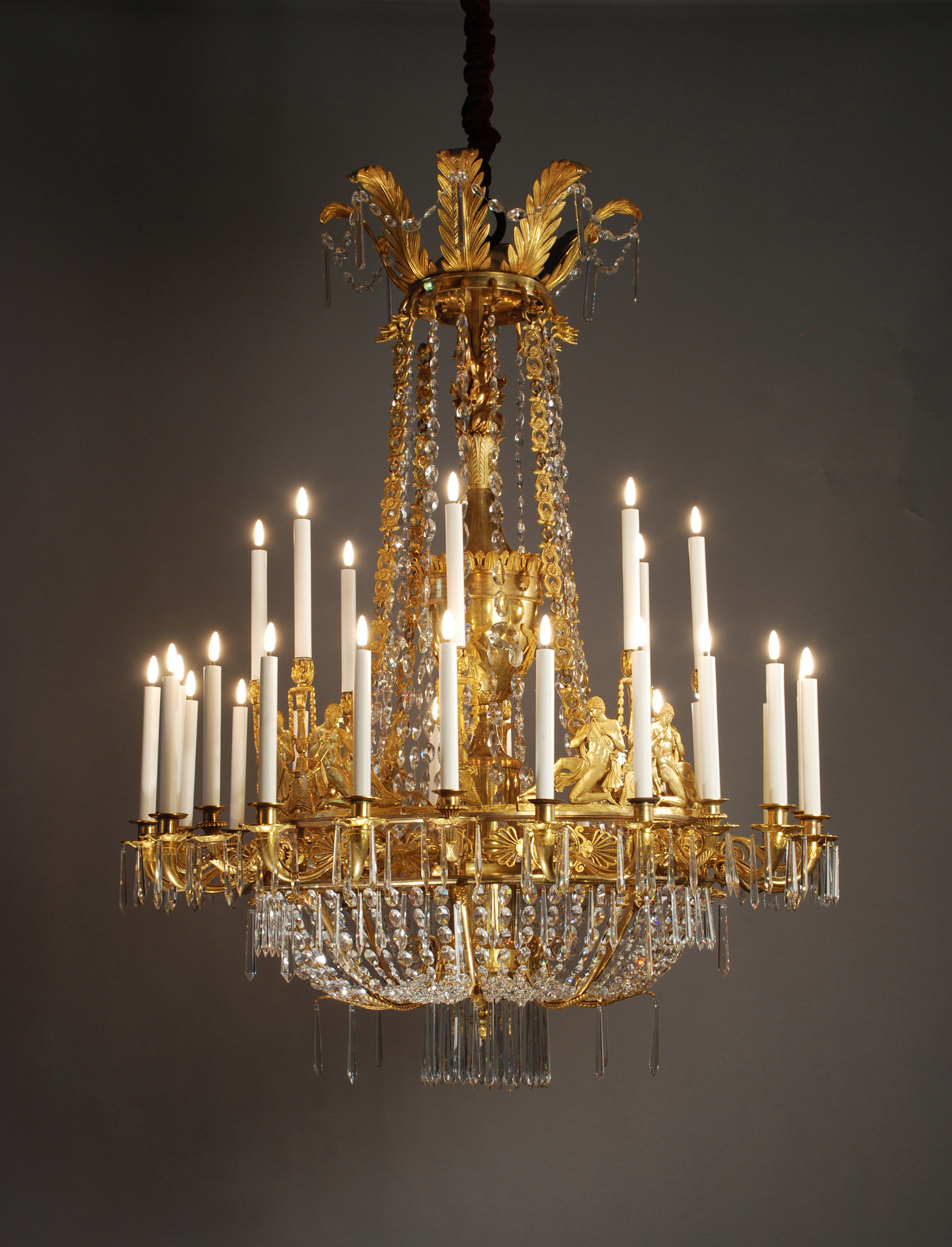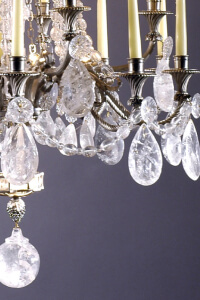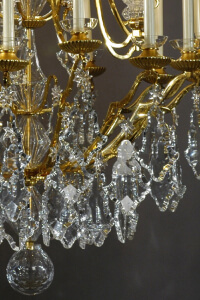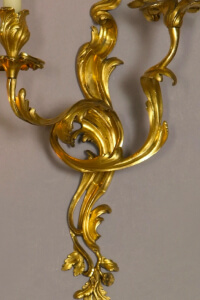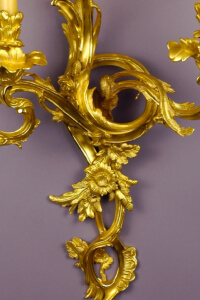Empire chandelier by Claude Galle 1804-1814.
Gilt bronze.
It was a time of imperial entrances, when cities welcomed the reigning monarch with great pomp. These events took place in a majestic setting, with ephemeral architectural decorations, artistic creations of all kinds in a collaboration between musicians, painters, sculptors and actors. Claude Galle designed this chandelier with these winged musicians to celebrate the Emperor's triumph, in keeping with this tradition of celebrating military victories. The expansion of the Empire propelled the eponymous style well beyond France's borders, influencing furniture in particular, with names such as Jacob and the artisans of the Faubourg Saint-Antoine. Among them was Claude Galle, a French bronze founder and gilder, who began working on gilding in his father-in-law Pierre Foy's foundry. With the support of Jean Hauré, he supplied furniture, clocks and lighting for prestigious residences such as Fontainebleau, Versailles, Saint-Cloud and Compiègne. The peak of his career came with the creation of this chandelier, which dates from the Empire period and precedes Galle's bankruptcy following Napoleon's defeat in 1812.
The Empire style is very influenced by the Emperor Napoleon who imposes his taste for massive and imposing elements. We find the strong symbols of Napoleon (like the eagle or the bee) and war and military decorations. The expansion of the Empire will lead to the diffusion of this style throughout Europe.
The architects and decorators Charles Percier and Pierre Fontaine were the designers of this meticulously archaeological style, brought back from the Napoleonic campaigns and inspired by Roman antiquity, the Etruscan and the Egyptians, who exhibit an opulent neoclassicism.
Lustre Empire par Claude Galle 1804-1814 en bronze doré.
Il était l'époque des entrées impériales, où les villes accueillaient avec faste le souverain régnant. Ces événements se déroulaient dans un cadre majestueux, avec des décors architecturaux éphémères, créations artistiques en tout genre dans une collaboration entre musiciens, peintres, sculpteurs et comédiens. Claude Galle a conçu ce lustre avec ces musiciens ailés pour célébrer le triomphe de l’Empereur, en lien avec cette tradition de célébration des victoires militaires. L'expansion de l'Empire a propulsé le style éponyme bien au-delà des frontières françaises, influençant notamment le mobilier, avec des noms tels que Jacob et les artisans du faubourg Saint-Antoine. Parmi eux, Claude Galle, fondeur de bronze et doreur français commence à travailler la dorure dans la fonderie de Pierre Foy, son beau-père. Avec le soutien de Jean Hauré, il fournit des meubles, horloges et luminaires pour des demeures prestigieuses telles que Fontainebleau, Versailles, Saint-Cloud et Compiègne. L'apogée de sa carrière intervient lors de la création de ce lustre daté de l'époque Empire et précède la faillite de Galle à la suite de la défaite de Napoléon en 1812.
Le style Empire est très influencé par l'Empereur Napoléon Ier qui impose son goût pour les éléments massifs et imposants. On retrouve les symboles forts de Napoléon Ier (comme l’aigle ou l’abeille) et des décors guerriers et militaires. L’expansion de l’Empire va entraîner la diffusion de ce style à travers toute l’Europe.
Les architectes et décorateurs Charles Percier et Pierre Fontaine furent les concepteurs de ce style minutieusement archéologique, ramené des campagnes napoléoniennes et s’inspirant de l’antiquité romaine, des étrusques et des égyptiens, qui présentent un néoclassicisme opulent.






